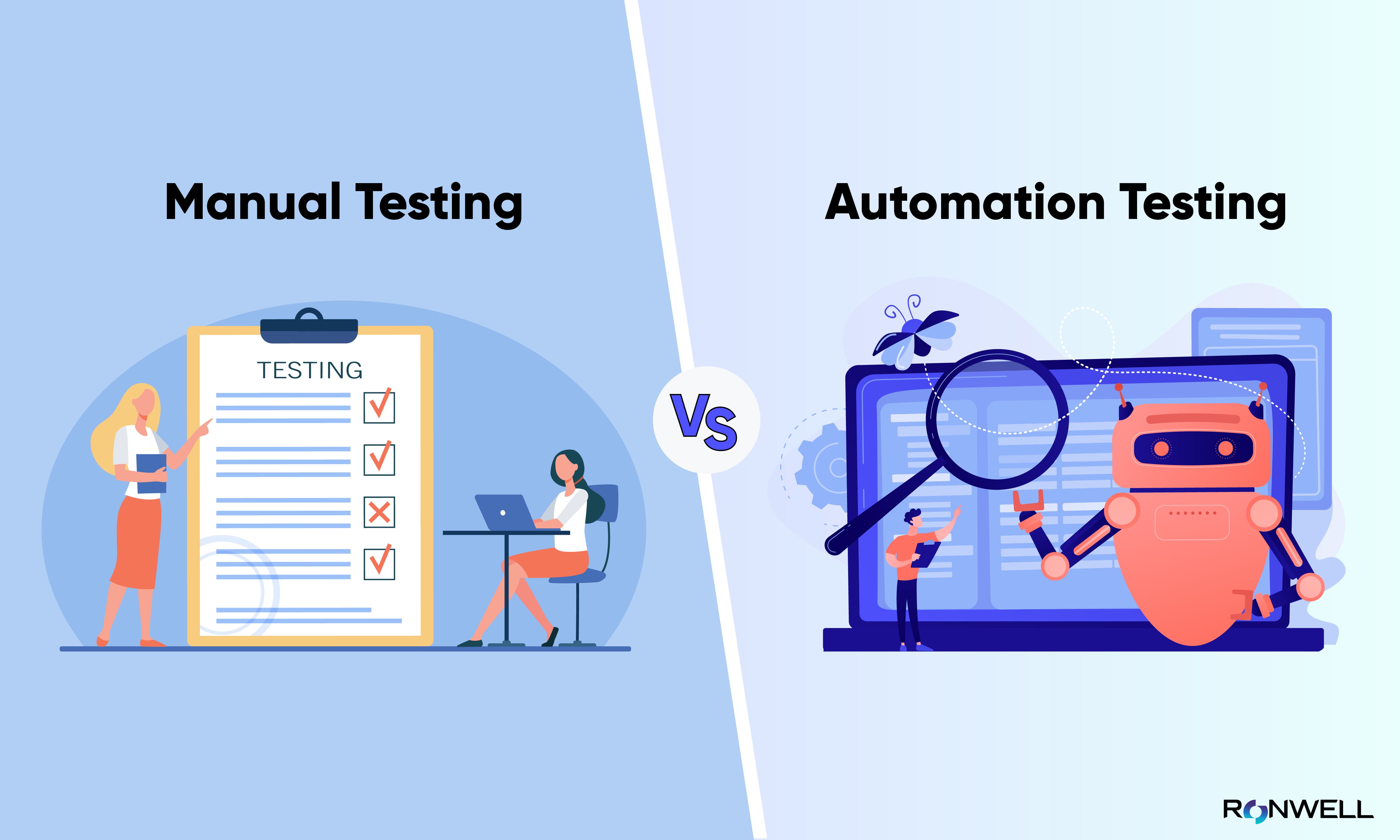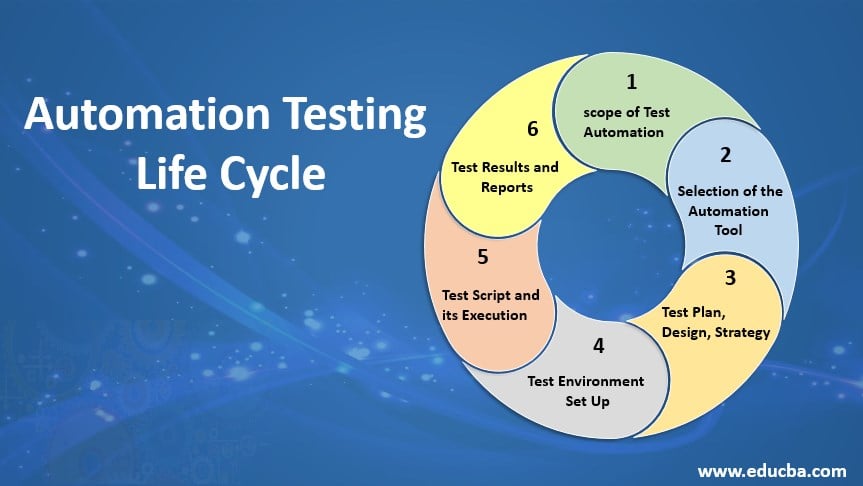The Importance of Automation Testing in Agile Development Settings
The Importance of Automation Testing in Agile Development Settings
Blog Article
From Guidebook to Automated Screening: A Comprehensive Overview to Transitioning Smoothly and Properly
In the world of software application screening, the change from guidebook to automated procedures has actually become a progressively vital shift for organizations seeking to improve efficiency and accuracy in their screening practices. As modern technology remains to advancement, the demand for seamless and reliable automated screening approaches has actually never been more important. The trip from guidebook to automated screening is not without its difficulties, however when approached purposefully and with a clear strategy in mind, the benefits can be substantial - automation testing. In this thorough overview, we will certainly explore vital steps and considerations important for a successful change, from the preliminary selection of devices to the integration of automation into existing workflows. Keep tuned to discover the insights that will certainly help lead the method for a smoother and more reliable testing process.
Benefits of Automated Checking
Automated testing uses countless advantages, enhancing efficiency and accuracy in software advancement procedures. Automated tests can be run concurrently on numerous devices and operating systems, considerably speeding up the screening stage contrasted to hands-on screening.
In addition, automated screening ensures a greater degree of precision in spotting problems. Because automated tests follow predefined scripts, human error is reduced, causing even more trusted test results. Consistency in testing is likewise enhanced, as automated examinations implement the same steps specifically each time they are run. This uniformity is essential in making certain that all functionalities of the software are completely examined, lowering the chance of unseen pests sliding via to manufacturing.
Selecting the Right Devices

To start with, assess your goals and needs. Comprehend the range of your task, the technologies involved, and the capability of your group. This analysis will assist you establish the features and abilities you call for in your screening devices.
Secondly, consider the compatibility of the tools with your existing systems and processes. Seamless integration with your present software program growth lifecycle is important to guarantee a smooth transition to automation.
Furthermore, assess the scalability and versatility of the tools. As your screening requires advance, the devices need to have the ability to adjust and suit adjustments effectively.
Lastly, consider the assistance and area around the devices. Durable support and an active customer neighborhood can offer important sources and help when carrying out automated testing. By very carefully taking into consideration these facets, you can pick the right tools that align with your requirements and set the phase for an effective shift to automated testing.
Composing Effective Test Manuscripts

When crafting examination scripts, it is vital to consider the details demands of the software being examined and make sure that the manuscripts deal with all critical capabilities. Detailed and clear naming conventions for examination scripts and examination cases can improve readability and maintainability. Additionally, integrating error handling systems within the examination scripts can aid in determining and resolving issues quickly.
In read review addition, organizing examination manuscripts into modular elements can boost reusability and scalability, decreasing redundancy and improving performance in test script upkeep. Normal reviews and updates to check manuscripts are crucial to maintain rate with evolving software application needs and functionalities. By complying with these concepts, testers can create effective and robust examination scripts that contribute significantly to the success of automated screening processes.
Integrating Automation Into Workflows
Effective combination of automation devices into existing workflows enhances processes and enhances efficiency within software program development cycles. When integrating automation right into operations, it is vital to identify repeated jobs that can be automated to conserve time and lower human error. By effortlessly incorporating automated testing tools like Selenium or Appium right into the software advancement lifecycle, groups can attain faster responses on code changes, leading to quicker bug detection and resolution. This combination enables constant testing throughout the advancement procedure, making sure that any type of problems are determined early on, resulting in higher software top quality. In addition, automation can be made use of to activate examinations instantly after each code dedicate, offering immediate recognition and maximizing testers to concentrate on more complicated scenarios. Correct assimilation of automation devices needs collaboration between growth, screening, and operations teams to develop a unified operations that enhances efficiency and effectiveness in providing top quality software application products.
Making Sure a Smooth Change
Effectively transitioning to automated screening includes thorough planning and mindful execution to minimize interruptions and make the most of performance in the software advancement process - automation testing. To make sure a smooth change, it is vital to start by performing a comprehensive evaluation of the present testing processes and determining locations where automation can bring one of the most substantial advantages. Involving with all stakeholders beforehand in the procedure, consisting of programmers, testers, and task supervisors, is critical for garnering assistance and buy-in for the automation campaign
Interaction is key throughout this change stage. Clear interaction of the objectives, benefits, and expectations of automated testing helps to manage have a peek here any resistance or concerns that might arise. In addition, giving adequate training and sources for see group members to upskill in automation tools and techniques is vital for ensuring an effective change.

Conclusion
To conclude, transitioning from handbook to automated testing uses many advantages, consisting of raised efficiency and reliability. By selecting the suitable tools, writing efficient test scripts, and integrating automation effortlessly into process, organizations can guarantee a smooth and successful shift. It is important to welcome automation as a beneficial property in software program screening procedures to enhance general high quality and efficiency.
In the realm of software application screening, the change from handbook to automated processes has become an increasingly vital change for companies looking for to improve effectiveness and accuracy in their testing practices. Automated tests can be run simultaneously on numerous tools and running systems, substantially speeding up the testing stage compared to manual testing. Uniformity in screening is also improved, as automated examinations carry out the same steps specifically each time they are run.To make certain the effective application of chosen testing devices, the production of efficient test manuscripts plays an essential duty in verifying the performance and performance of automated processes - automation testing. By following these concepts, testers can produce efficient and robust examination scripts that add considerably to the success of automated screening procedures
Report this page